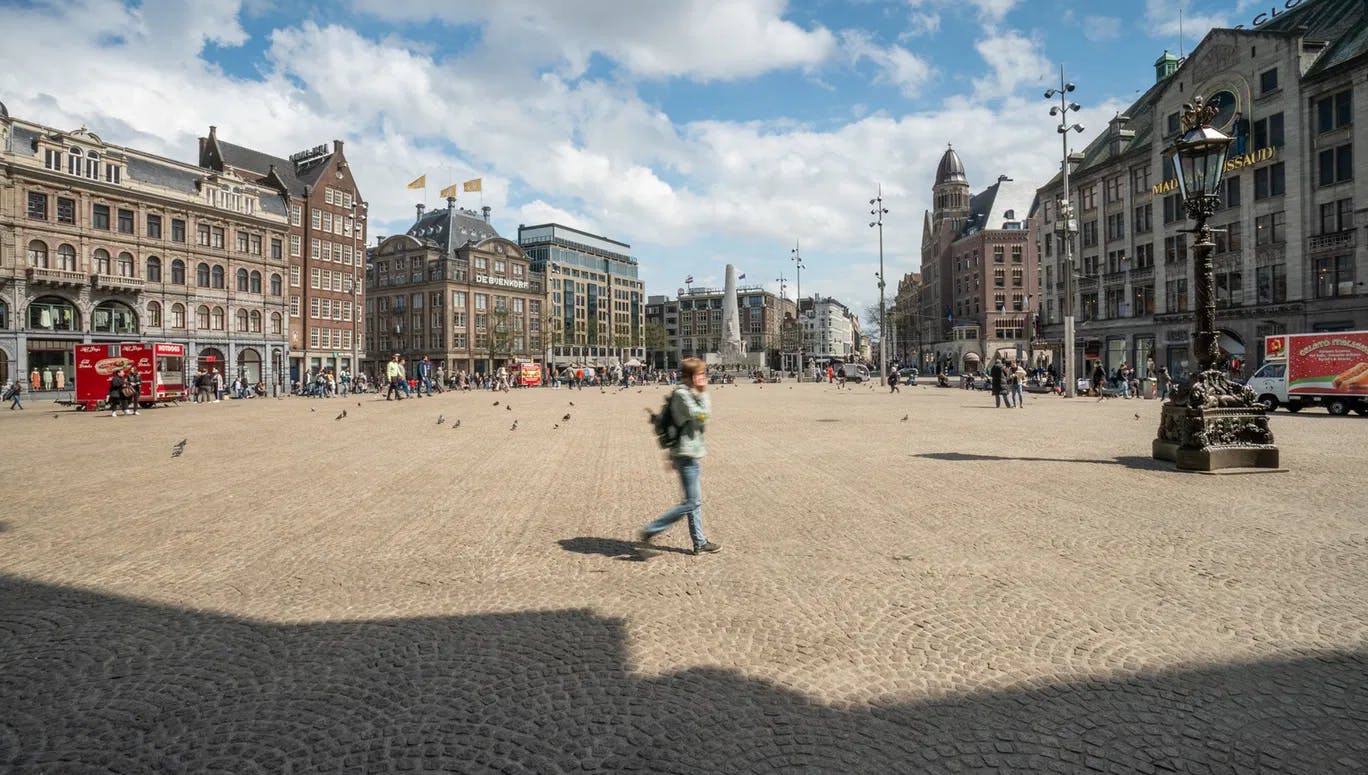Transforming Amsterdam into a smart city
Cities are at the centre of today's societal and environmental issues as mass urbanisation sweeps the globe. So, how are innovators in Amsterdam embracing digital solutions to make the Dutch capital a smart city?
Developing digital solutions for a better future
Amsterdam has long been renowned for its canals and cycling scene. But in recent years, it has also gained recognition as an example of what it takes to develop into a smart city thanks to several business initiatives that have been developing new approaches to everyday life.
The Johan Cruijff ArenA in Amsterdam regularly tests and accelerates 'smart city' solutions to help solve urban and societal challenges in the areas of Environmental, Social, and Governance (ESG), mobility, crowd control, security, visitor engagement, and citizen well-being. Since opening in 1996, the Johan Cruijff ArenA has become its very own "small smart city" thanks to its impressive energy storage system and data ecosystem.
It has been driving innovation with new data and analytics capabilities and has joined forces with European football organisations and clubs to tackle various challenges in the football industry and the world. Through the Football Innovation Platform, startups can collaborate on smart solutions in the context of various themed challenges: from making waste more circular, making travel to and from stadiums more environmentally friendly or increasing the bond between spectators and sporting events, these challenges are aimed at healthy, safe, secure and sustainable events that can be implemented on a global level.
A new approach to crowd management
The Amsterdam-based smart city design agency Tapp is also exploring novel approaches to help cities and citizens fully utilise new technology and comprehend how past trends might influence the development of a future that is more prosperous, inclusive, and sustainable. The company has spearheaded various projects in crowd-monitoring data, smart energy and future mobility. Its Public Eye project, for instance, monitors crowdedness, making it possible to create insights and forecast how and where a crowd will move. Operational staff can then act by redirecting the crowd via a digital sign, for example. It also enables people to calculate the least crowded route to a location.
Amsterdam Smart City
The name says it all. The urban innovation platform Amsterdam Smart City is works with governments, knowledge institutions, social organisations and innovative companies active in the Amsterdam Metropolitan Area on smart solutions. Amsterdam Smart City has over 20 permanent partners and more than 8,000 innovators working on cleaner and greener cities to answer some of the most pressing questions when it comes to sustainable energy, clean and electric transport and the transparency of the digital world.
One of Amsterdam Smart City's programme partners, the Marineterrein Amsterdam, for example, serves as a test area and urban district for smart solutions, where testing for anything from delivery robots to changing dull grey concrete into green and living material takes place. Recently, Amsterdam Smart City highlighted Responsible Sensing Lab's Shutterring project which aims to make smart doorbells more responsible by ensuring the privacy of bypassers and owners while keeping the main functionality of the device intact.
The CleanMobilEnergy project on the other hand combines multiple renewable energy sources, storage technologies, electric vehicles, and energy consumption optimisation into a single, innovative smart energy management system. The creation of this intelligent Energy Management System (iEMS) is expected to dramatically lower CO2 emissions and increase the economic value of renewable energy.
Amsterdam Institute for Advanced Metropolitan Solutions
Innovative ideas and concepts can also help to improve Amsterdam’s accessibility. However, while switching from fossil fuels to electricity would improve the air quality, it won't necessarily reduce traffic due to an increase in Electric Vehicles (EVs) and e-bikes on the road. That's why the Amsterdam Institute for Advanced Metropolitan Solutions are spearheading the option of shared mobility hubs in metropolitan areas, autonomous boats and mobility management tools that enable cities to directly communicate with their residents via mobility providers.
While the autonomous boat has been tested at the Marineterrein Living Lab, the EU-sponsored mobility initiative invited motorists to 'code the streets' and take the more “socially responsible” driving routes in each city in October 2021. This included suggestions on avoiding roads close to schools, residential areas, and parts of the city with high pollution.
By looking at these examples, it is clear that various innovators are using interconnected technologies and applications to maintain the city's functionality - all while lowering waste, pollution, and resource consumption - and helping the capital become a smart city.
